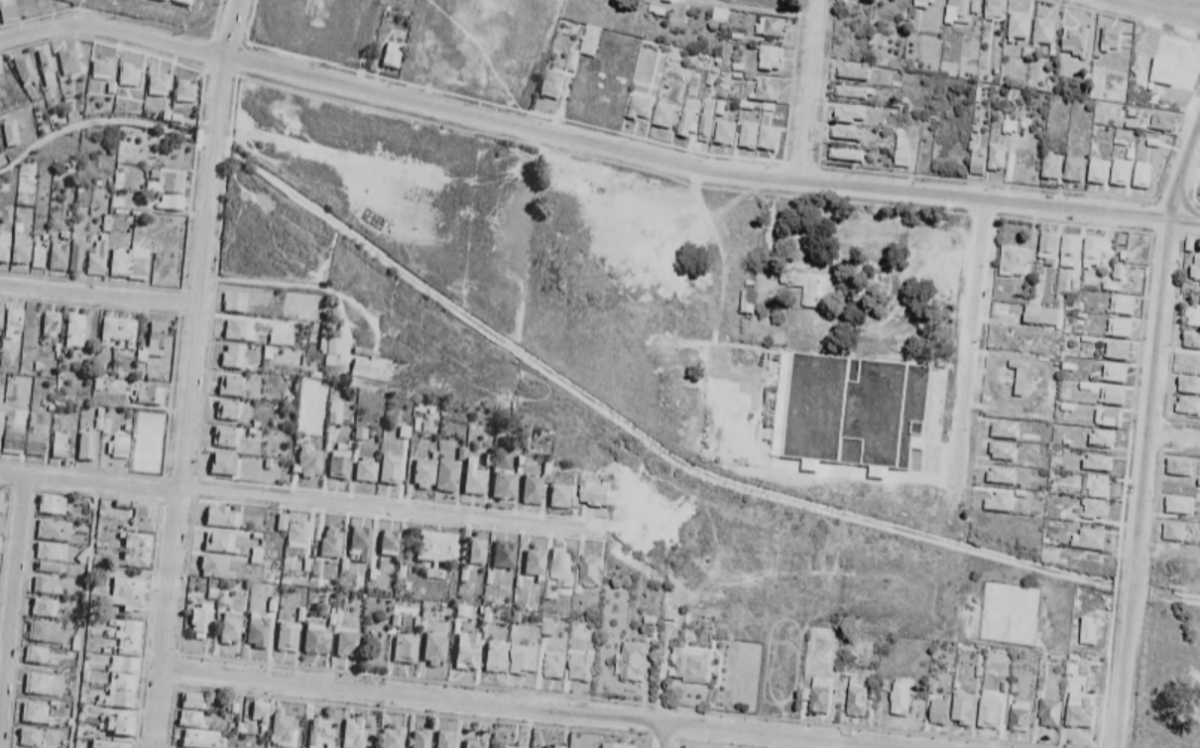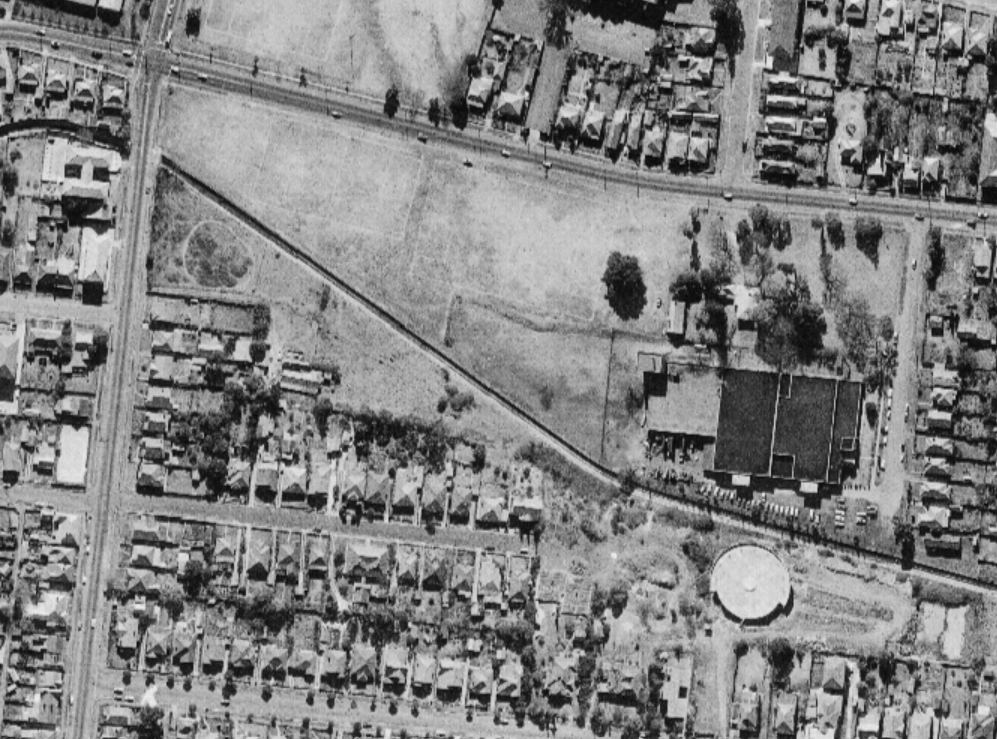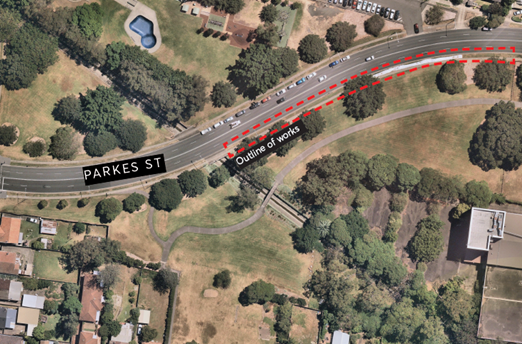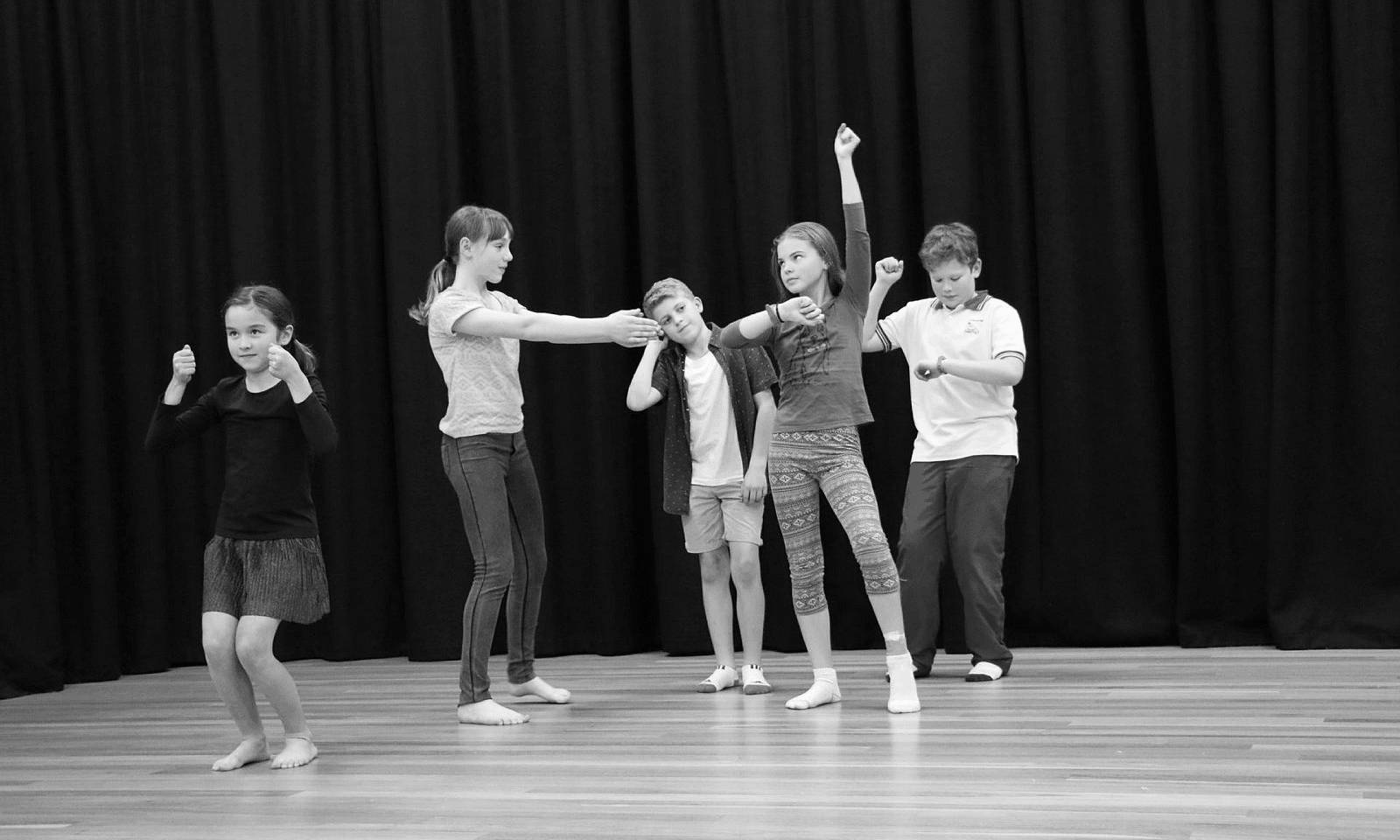February 2023 - Experiment Farm Reserve opens to the public
Following months of extensive remediation and landscaping work, Experiment Farm Reserve at Harris Park is now open to the public.
Upgrades began in August 2022, with the City of Parramatta and specialist contractors working closely with Heritage NSW and the National Trust to manage the work in this historically sensitive area.
With remediation complete, work included construction of a double-width footpath along the western side of the reserve, and installation of new turf, garden beds, sandstone retaining walls, and a solar-powered irrigation system.
This $1M+ project will ensure the beautiful heritage fig trees and public green spaces - on the doorstep of the Parramatta CBD - can be enjoyed for generations to come.
Experiment Farm Cottage
Experiment Farm Cottage is part of an historical precinct which includes Hambledon Cottage (1824), Elizabeth Farm (1793) and the Queen’s Wharf. Managed by National Trust NSW, Experiment Farm Cottage is one of many heritage attractions within the City of Parramatta.
The early days of farming in Parramatta were critical in transforming the penal colony to a free settlement. In 1789, Experiment Farm was the site of the first land grant in the Colony of New South Wales.
James Ruse was initially granted one acre of land. His transformation from First Fleet convict to pioneering man of the land is a legendary story and a key part in Parramatta’s history.
By 1791, James Ruse had successfully farmed a 30-acre site. He produced the Colony’s first wheat harvest and proved Governor Phillip’s “experiment". James Ruse proved a new settler could feed and shelter his family, and that self-sufficiency was possible.
In 1793, Colonial Surgeon John Harris purchased the land from James Ruse for £40. The suburb Harris Park is named after him.
Harris had built the Indian-style bungalow we see on the site today by 1835. Some historians suggest there is evidence to support construction as early as the mid 1790s. This would make Experiment Farm Cottage the oldest surviving European residence in Australia.
Experiment Farm Cottage is open the first and third Friday and Saturday each month. For information on opening hours and tours, call the National Trust on (02) 9635 8149 or visit the National Trust website.
Stage Two
Experiment Farm Landscape and Remediation Works
August - November 2022
Work is underway to construct a capping layer to permanently address contaminated soils found within Experiment Farm Cottage Reserve.
Over nine (9) weeks, a geotextile marker and capping layer using clean soil will be constructed. The protective cap will raise the height of the reserve by approximately 30cm, with footpaths constructed at the new level.
As this is a historically sensitive site, consent for these works was granted by the Heritage Council of NSW.
A Heritage Consultant has been appointed to ensure the protection of heritage items at the site. The sandstone staircase and all existing trees will be retained.
A safe work site will be created with pedestrian detours in place.
Works will take place Monday to Friday 7am to 5pm and Saturday 8am to 5pm and are expected to take nine (9) weeks, finishing in November 2022, weather permitting.
Please see Frequently Asked Questions below or Download the PDF.
-
The works at Experiment Farm Cottage Reserve will involve the installation of a brightly coloured geofabric marker layer over the existing grass. New, certified clean soil will be placed over the top and lightly compacted, and new turf installed.
A double-width footpath will be constructed along the western end of the nature strip, similar to that already in place at the eastern end. A sandstone block retaining wall will border the new footpath and a new driveway will be installed in the Hassall Street frontage to allow access for maintenance vehicles.
An underground irrigation system will be installed, along with a solar panel to power the system, with a control panel located near the Ruse Street frontage. This system will ensure turf, trees, and other vegetation will continue to have access to water.
-
Works will take place between 7am and 5pm Monday to Friday, and between 8am and 5pm on Saturdays, and are expected to take nine (9) weeks, weather permitting. Works are expected to be completed by November 2022.
-
Experiment Farm Reserve has been identified by the NSW Environment Protection Authority (EPA) as one of many sites across Sydney where waste associated with James Hardie and Company was disposed.
Testing was conducted at the site in 2018 and 2020, and this testing confirmed that asbestos containing materials are present within the soils at the site.
Asbestos can only pose a risk to human health if it can become airborne and be inhaled. While existing layers of grass and topsoil generally protect against exposure risk, best practice requires permanent treatment.
To prevent the erosion of topsoils and the exposure of fill materials, physical barriers or ‘caps’ are constructed to ensure that asbestos containing materials can never come to the surface.
-
While Experiment Farm Cottage remains open, a compound to the north of the cottage creating a safe-work-zone will be established. Public access will not be permitted in this area and pedestrian detours will be in place.
All appropriate safety precautions will be undertaken, including the use of air-quality monitoring during any works with the potential to disturb contaminated soils.
All works will be undertaken by a licensed contractor and approved by an assessor. Throughout the program, workers will wear appropriate protective equipment and follow safety protocols as mandated by NSW SafeWork and the EPA.
-
Aerial imagery suggests that asbestos materials may have come to the site in contaminated fill in the 1950’s, before the area was converted to parklands. Records provided to the EPA suggest that the material originated at the James Hardie manufacturing facility at Grand Avenue, Camellia. A small portion of the material found may be associated with houses that were present (now demolished) on parts of the site, immediately opposite Experiment Farm Cottage.

-
In preparing for these works, Council consulted with Heritage Consultants and archaeologists and stakeholders including the National Trust. A Heritage Impact Assessment was prepared and on review of these studies the Heritage Council of NSW provided consent for these works.
A Heritage Consultant has been engaged to ensure that the significant historic value of the site is protected during works and specialists will also ensure the trees are protected.
-
All trees are being protected. Arborists will advise on and implement measures to ensure the health of the trees on site during, and after, the works. Special tree-sensitive capping will be used around the Port Jackson Figs, with an erosion control ‘terramat’ and mulch capping layer constructed within their root zones. Special tree ‘snorkels’ will be installed, providing the trees with vital oxygen and other nutrients.
Generally, the existing topography of the site will be retained within the capping layer to ensure no impact to the overland flow of rainwater at the site.
-
Experiment Farm Cottage will remain open, however a compound to the north of the cottage will be created to establish a safe work zone.
Traffic management and control workers will be on site to facilitate deliveries of the large volumes of soil needed for this project, using Stop/Go signage to manage traffic.
During works within the nature strip, parts of the left lane of Parkes Street may need to be closed.
Visitors to the reserve are asked to take extra care and follow instructions provided by traffic controllers and staff.
-

Pedestrians heading along Hassall / Parkes Street are directed to use the footpath on the north of the street. Visitors to the reserve will be directed to use the pedestrian crossing at the intersection of Purchase Street and Hassall Street to the east.
Pedestrians travelling west will be directed to use the pedestrian crossing at the intersection of Parkes and Harris streets.
Access between Ruse Street and Parkes Street will be via a detour along the existing footpath along Harris Street.
Traffic management and control workers will be on-site and signage will guide visitors. For safety, all visitors are asked to follow directions provided by staff on site.
-
Yes! Experiment Farm Cottage is managed by the National Trust of Australia. Information about the cottage opening hours and tours is available on the Experiment Farm web page here.
You can also call the National Trust on (02) 9635 8149 for information on tours and opening hours.
-
For information on James Hardie Legacy sites please see Council’s webpage.
For information on asbestos generally and asbestos around the home.
-
Parramatta has a fascinating history. You can find out more about Parramatta’s pre-European and Colonial history, and see information on tours here.
-
Contact City of Parramatta on 1300 617 058, and ask to speak with the Experiment Farm project team or email openspace@cityofparramatta.nsw.gov.au
Stage One
Parkes Street Nature Strip – Investigation Findings and Works Program March 2021
Investigations into the Parkes Street nature strip have confirmed that asbestos contamination, known to be present in soils beneath Experiment Farm, extends into the lands that form the nature strip. While the material does not pose a health risk if it remains undisturbed, damage to existing grass, which acts as a cover, could lead to the soil being exposed.
With approval from the NSW Heritage Council to carry out works at Experiment Farm, City of Parramatta has included the nature strip within the remediation program for this site. A new double-width pedestrian footpath will cap the soil as a permanent remediation measure.
Work Program
Works in the nature strip will be divided into two stages. The eastern area of the nature strip, between Clay Cliff Creek and the western boundary of Hambledon Cottage Reserve, will undergo treatment first, with works scheduled to start Monday 15 March. Footpath detours will be in place throughout the works program. Work is expected to take approximately five (5) weeks to complete, weather permitting.
In accordance with NSW SafeWork requirements, asbestos air-quality monitoring will be carried out during all excavation works. To ensure public health and environmental protection, workers will employ all appropriate safety precautions while on site. Workers will also be required to wear appropriate personal protective equipment.
Stage two works
It is expected that work to treat the western area of the nature strip will begin later this year. Planning for this work, as part of a program to remediate other areas of Experiment Farm Reserve, is now in its final stages. More information will be provided on this page as details of the program are confirmed.
Who do I contact for more information?
Please contact City of Parramatta’s Project Manager, on telephone (02) 9806 8151 or our Customer Contact Centre on 1300 617 058 or email council@cityofparramatta.nsw.gov.au.
Investigations in Parkes Street Nature Strip – May 2020
Appropriately qualified environmental consultants have been engaged to carry out soil investigation works in the nature strip of this area from May 18th. The purpose of these works is to test the soil beneath the nature strip, and determine whether the soils are affected by asbestos or other contaminants. These works will inform designs to improve the capping of contaminated soils that have been previously identified buried underneath the adjacent Experiment Farm parklands.
How will the works be carried out safely?
The works will involve the use of hand operated tools to dig boreholes in a number of locations, and take samples of the soil at various depths to be tested for contaminants. In accordance with SafeWork requirements, appropriate personal protective equipment will be worn by workers during the testing, and air quality monitoring will be carried out throughout the works. Barricades will be in place to ensure a safe distance between pedestrians the works area.
Will the footpath be accessible during the works?
During works, some areas of the footpath will be closed. Detours will be in place and marked with signage. Pedestrians requiring use of a footpath will be directed to use the footpath on the northern side of Hassall street, using the pedestrian crossings at the traffic lights at the intersections of Parkes and Harris Street to the west, and at Hassall Street and Alfred Street to the east.
How long will the works take?
The testing is expected to take up to 5 working days, weather permitting. Each area will be reinstated and inspected before being reopened to public access.
Previous investigations at this site
Experiment Farm is one of a number of sites across NSW that have been identified by the NSW EPA as having potentially received waste from James Hardie Industries as fill material.
Soil investigations were undertaken in the parklands of Experiment Farm and Hambledon Cottage reserve during 2017 and 2018. These investigations confirmed the presence of fill materials, including asbestos containing materials, at various depths in a number of areas beneath the parklands.
Aerial imagery and other records suggest that the fill material was placed in the area between the 1950’s and 1960’s.
While a permanent physical cap is designed and constructed, management works at this site have focussed on maintaining healthy grass coverage, mulching, and prohibiting excavation works that could breach the protective surface soils and expose the fill layer. As the site is a State Heritage site, a heritage review has also been completed to ensure works are designed and carried out in a way that protects the archaeological and historical significance of the site.
Following completion of this review, Council has applied for, and been granted an exemption under section 60 of the Heritage Act 1977 by the Heritage Council of New South Wales to allow the works to be commissioned and carried out. This exemption was granted in March 2020.




